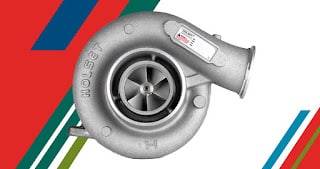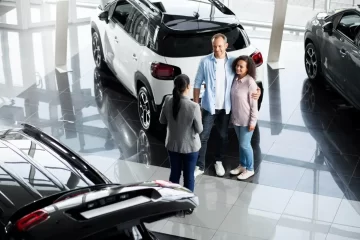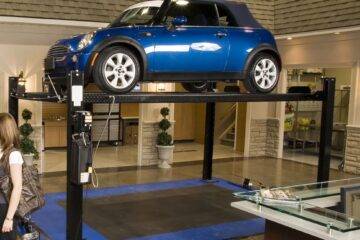A Quick Guide to Starting a Car Dealership
The American auto industry faces COVID-19 turmoil as Ford’s U.S. sales fell 33% due to a semi-conductor chip shortage. You may think now is a terrible time to get into the car business. You couldn’t be more wrong.
A new car shortage means pent-up demand. Once the supply improves, consumers will be ready to buy. Why?
Americans love new cars. If you want to make money, starting a car dealership might be your best bet. How does a person turn an empty lot into a dealership?
It takes a lot of hustle, but you’re no stranger to that. Check out our guide to learn how to build a new car dealership from the ground up.
Make a Business Plan
The car business is like any other entrepreneurial endeavor. Starting a business means first making a plan. This plan means securing a location, determining your start-up costs, and seeking financing.
Did you know16,623 light-vehicle dealerships sell new cars in the United States right now? How do you plan to stand out in a crowd?
Start-Up Costs
Starting a business is the American dream, but there is a high cost associated with starting a new car dealership. Your start-up costs include the typical like buying a location, remodeling, and purchasing inventory.
To operate, however, you must secure many state licenses. You’ll need:
- A surety bond filed with your state’s DMV
- A dealership license
- Used car bonds
- Wholesaler bonds
The state and your financial situation determine the costs. A standard surety bond protects consumers and the state from fraud, and it can be expensive. Your credit score determines how much of a fee you’ll pay to your state’s DMV.
Ongoing Costs
Opening a business to make a profit means you must calculate your ongoing costs. Utility bills, inventory maintenance, labor, and insurance premiums are all costs you’ll have to pay every month.
Any solid business plan will calculate these expenses with the best possible estimate. New businesses operate on slim margins, and long-term success often depends on how you manage these recurring business costs.
What’s Your Market?
Your market determines the type of dealership you’ll run. It also helps you coalesce an effective marketing strategy. You wouldn’t open a Porsche dealership in a working-class neighborhood, right?
Nor would you market a used car dealership to wealthy suburban McMansion owners. Selling cars is like selling anything else. You have to hit the sweet spot where you can upsell without upsetting your clientele.
Financing
Unless you’re independently wealthy, you’ll need a considerable amount of money to start your dealership. Think about all the costs you’ve determined.
Even if you have a lot of money, it may still make sense to secure an SBA loan when you begin. You’ll also need other forms of financing to maintain your inventory as you open.
Floor Plan Financing
Floor plan financing helps you keep inventory at your dealership. This financing acts like a high-limit credit card and lets you purchase new cars from the manufacturer.
As you sell your inventory, you repay the floor plan financing with interest.
Business Credit Line
All businesses have ongoing costs. A line of business credit will help you cover those costs, especially any unplanned expenditures.
If your credit isn’t spectacular, an unsecured line of business credit will give you access to the capital you need when you need it. With this unsecured line of credit, you’ll pay a principal each month plus interest on the money you use.
Equipment Financing
New car dealerships also offer maintenance for vehicles under warranty. To open a repair shop, you’ll need a considerable amount of expensive equipment.
Lenders offer dealerships specific equipment loans meant to cover these costs. With these equipment loans, you can cover the costs of buying new repair equipment and have the capital for any replacements.
Revenue-Based Financing
Did you know car sales are seasonal? While some folks may be in the market all year, most cars in America sell during the spring and the fall. Sales trends show that the winter months are the slowest sales months.
Why is that? Winter includes the holiday season. Many people don’t have expendable income during January and February to make a large purchase.
You can’t operate a seasonal car business, and you won’t receive a break on your operating costs during these months. Many lenders offer car dealerships revenue-based financing for this reason.
With this type of financing, you pay a rate based on your total revenue for the month rather than a fixed amount.
Business Insurance
Any business needs insurance to operate safely and legally. A new car dealership with an auto repair shop will need both general liability and workers’ compensation insurance.
What else do you need?
- A surety bond or auto dealer bond to protect customers and dealers from manufacturer fraud
- General liability to protect yourself from possible customer injuries
- Commercial property insurance to protect against any inventory loss
- Commercial auto insurance in case a customer gets in an accident during a test drive
- Workers’ Compensation should an employee suffer an injury on the job
Wading through the particulars of business insurance for a car dealership can get complicated. There’s so much you need to operate. Click here for more help determining your insurance needs.
Starting a Car Dealership
Starting a car dealership isn’t easy, but it is profitable. Though COVID-19 caused havoc in the new and used automobile markets, stabilizing forces like vaccination are on the way. Most experts believe the pent-up demand for cars exists and will explode once the supply chain stabilizes.
Now might be the best time to start an auto dealership. Follow this guide to get a leg-up on your competition.
Do you need more helpful small business tips? Don’t hide your entrepreneurial impulse. Check out the rest of our page for more business news.











